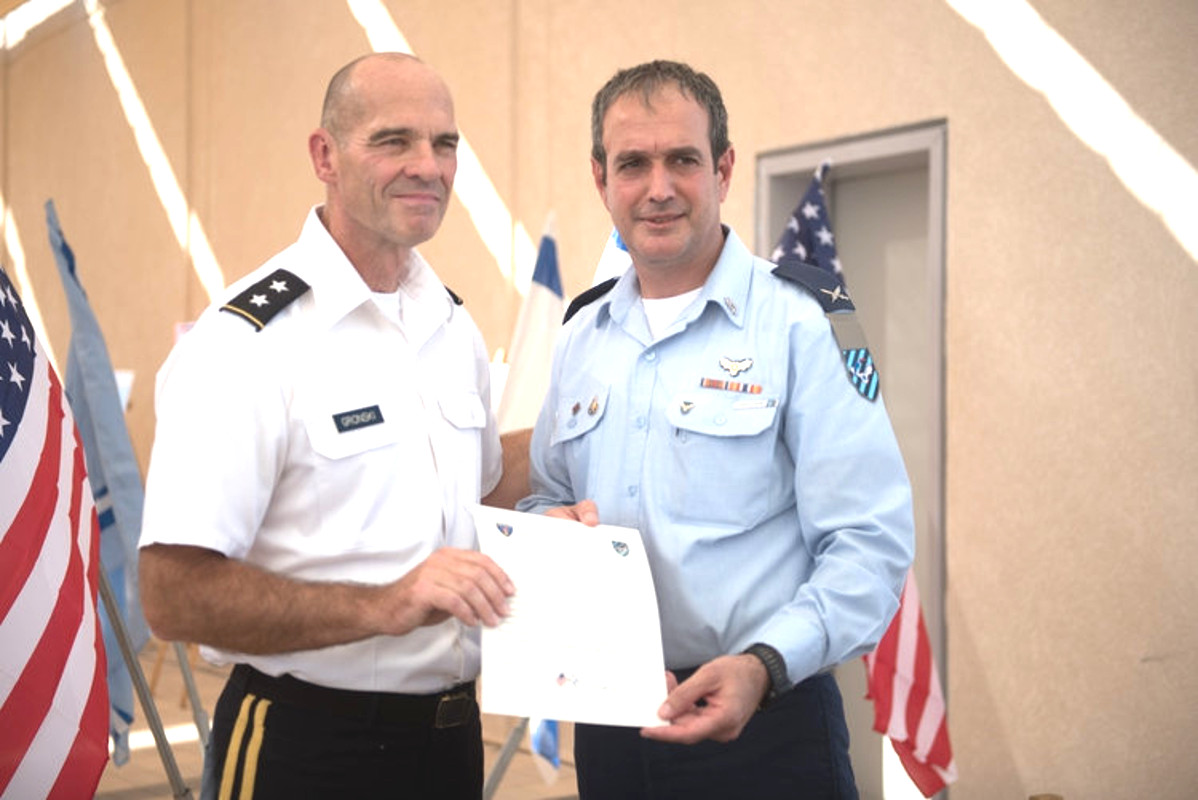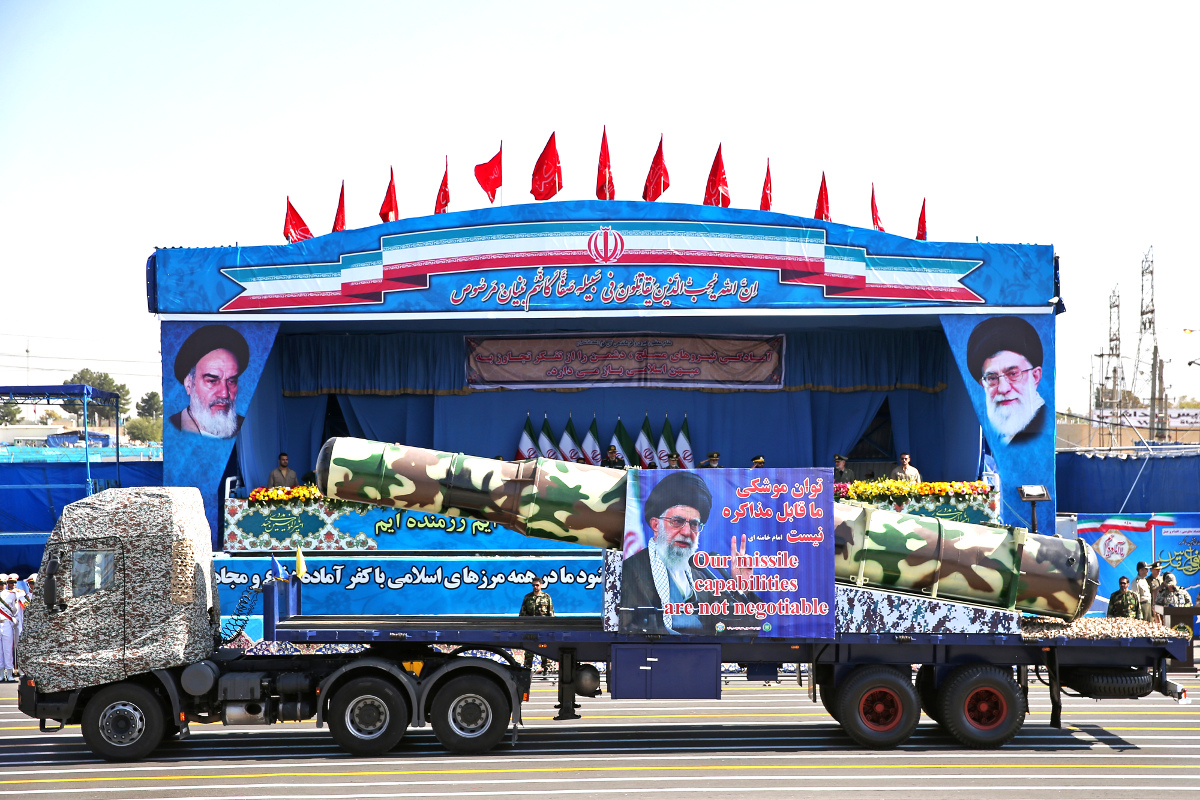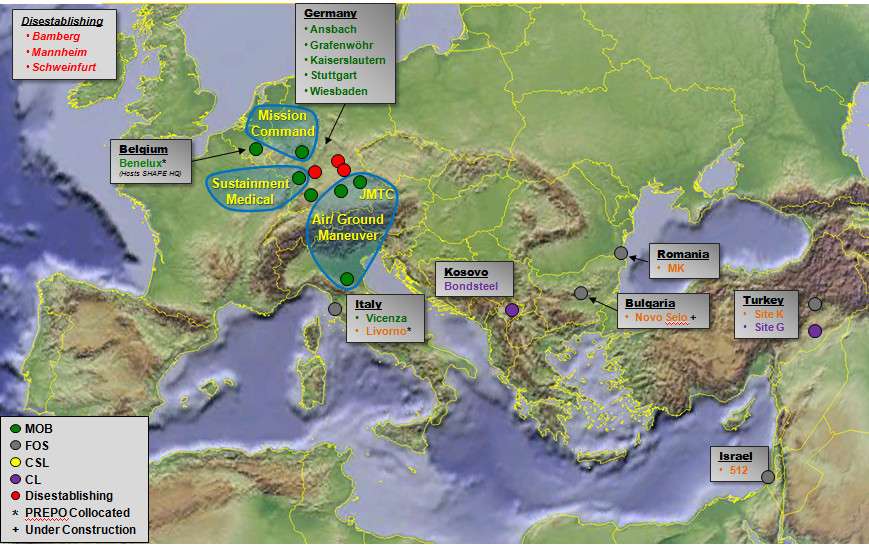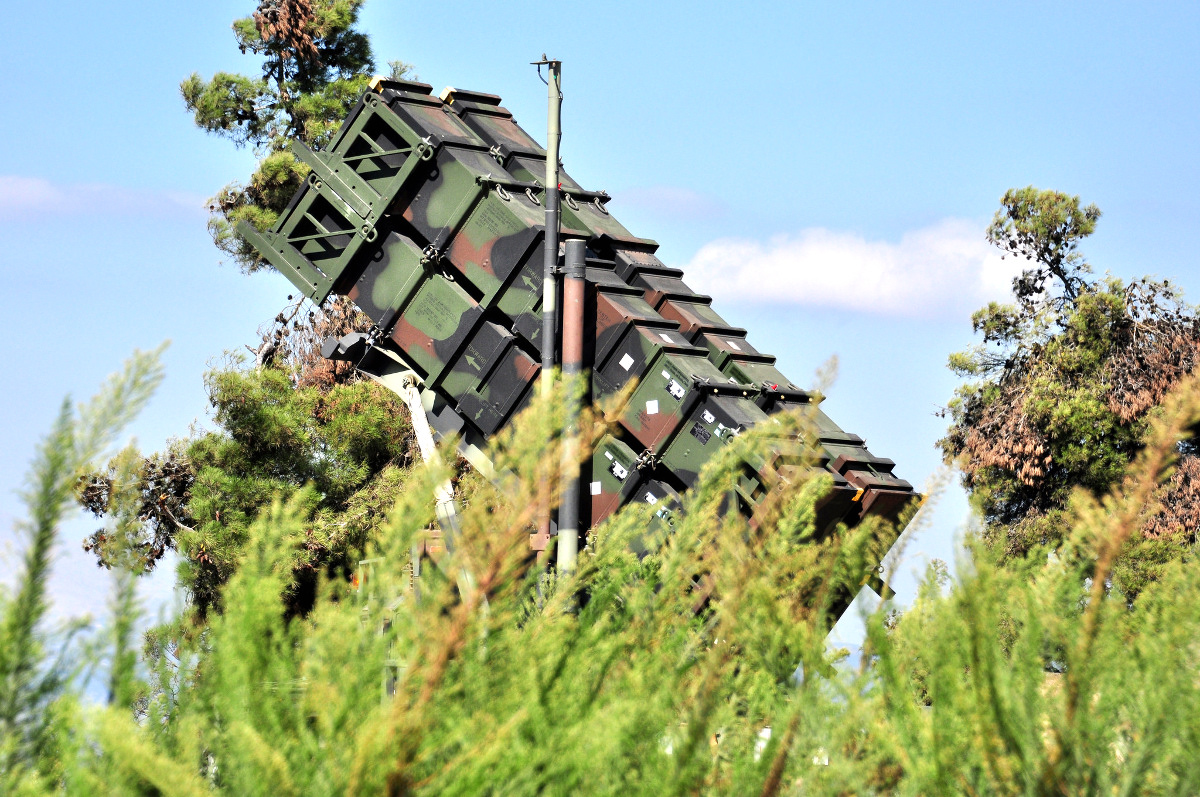The United States and Israel have a long history of close military cooperation, but much of it remains secretive or under-publicized in nature. Now, however, the U.S. military has an officially acknowledged permanent base of sorts, a possible signal of an expanding air and missile defense partnership as U.S. President Donald Trump’s administration continues to challenge Iran over its advanced weapons programs, including development of ballistic missiles.
On Sept. 18, 2017, the U.S. Army’s top command in Europe and the Israeli Air Force held a ceremony to officially break ground on what they described as a “life support area,” which generally refers to barracks-like facilities where personnel can eat, sleep, and bathe, among other things. The “LSA” will be situated within the Israel Defense Forces Air Defense School, located at Bislach Air Base near Beersheba in southern Israel’s Negev Desert, but will be an entirely American-run affair.
“I would like to note that this life support area represents the first ever stationing of a United States Army unit on Israeli soil,” U.S. Army Major General John Gronski, Deputy Commanding General of U.S. Army Europe for Army National Guard and a member of the Pennsylvania Army National Guard, said in a speech. “The United States and Israel have long planned together, exercised together, trained together – and now with the opening of this site, these crucial interactions will occur every day.”
“A few dozens of soldiers of our American allies will be stationed here permanently,” Israeli Air Force Brigadier General Zvika Haimovich, head of the Israel Defense Force’s air defense arm, added. “They are part of an American task force that will be stationed here.”

This announcement came on the same day that U.S. President Donald Trump met with Israeli Prime Minister Benjamin Netanyahu on the sidelines of the United Nations General Assembly in New York City, New York. The two leaders talked about mutual security interests, including the situation in Syria and concerns about Iran growing influence in the region, according to an official readout of the meeting.
Trump has long criticized Iran and the deal his predecessor President Barack Obama struck with that country over its controversial nuclear program, especially intensifying his push to isolate the government in Terhan following a visit to Saudi Arabia in May 2017. He has threatened to scrap arrangement, formally known as the Joint Comprehensive Plan of Action (JCPOA).

“We cannot let a murderous regime like Iran build nuclear weapons, and we cannot let them use a deal as a cover for nuclear warfare,” he told the United Nations General Assembly is his first ever speech before the body on Sept. 19, 2017. “The nuclear deal was an embarrassment to the United States.”
Critics warn that getting rid of the Iran Deal would only hasten Iranian nuclear and missile developments, unconstrained by any international oversight, no matter how limited or problematic. Their arguments often point to the example of North Korea, which the collapse of talks and an interim agreement has now led to a pariah state that possesses a working hydrogen bomb and an intercontinental ballistic missile capable of reaching much of the United States.
Regardless, Israel said the opening of the American base in the Negev, also known as Site 883, was two years in the making, meaning the Obama administration had set the plan in motion. It makes sense, since the parties to the JCPOA did not structure the agreement to cover conventional weapons development, including long ballistic missiles that could potentially threaten Israel or other countries in the Middle East and beyond.
Though this new site may be technically permanent, it expands on an existing forward deployed base at the top of Israel’s Mount Har Keren, also in the Negev. For nearly a decade, members of the U.S. Army’s 10th Army Air and Missile Defense Command have maintained a long-range X-band AN/TPY-2 radar, primarily associated with the Terminal High Altitude Air Defense System (THAAD), at a so-called “cooperative security location” known as Site 512.

While the U.S. military has no THAAD interceptors in Israel at present, the radar helps provide additional situational awareness for both American and Israeli forces. It feeds information into at least one of the Israel Defense Forces’ command centers responsible for operating the Arrow 3 ballistic missile defense system.
On top of that, the U.S. Army Corps of Engineers has facilitated a significant amount of other construction projects in Israel through the Foreign Military Sales program, including at least two massive underground command and control bunkers. In 2015, the Corps told the author that it was awarding contracts for an average of 10 to 14 major building programs on behalf of the Israeli Ministry of Defense each year.
Site 883 looks set to improve upon that existing cooperation, possibly helping to streamline the flow of data from Site 512, as well as other U.S. intelligence sources, such as Space-Based Infrared System (SBIRS) early warning satellites. Of course, its existence “would not hamper the IDFs ability to act independently against any threat to the security of the State of Israel,” Brigadier General Haimovich stressed.
At the same time, the United States is continuing to facilitate the development of the Arrow 3 interceptor. In June 2017, U.S. Navy Vice Admiral J.D. Syring, head of the Missile Defense Agency, said the next test of that system would occur at the contractor-operated Pacific Spaceport Complex-Alaska (PCSA) in Kodiak, Alaska, in 2018.

Separately, the U.S. Army has been testing the Israeli Tamir interceptor, the weapon behind the country’s much touted Iron Dome system, as a possible load out for its truck-mounted Indirect Fire Protection Capability launcher. Iron Dome is a short range system that Israel primarily uses to knock down incoming rockets that militants often fire into the country or disputed border territories.
It is possible that Tamir could have a role in defeating the increasing threat of small unmanned aerial vehicles, as well. Earlier in September 2017, State-owned Israeli defense contractor Rafael announced it was planning to demonstrate the full Iron Dome system for the U.S. Army as a possible interim solution to the service’s glaring short- and medium-range air defense gap, an issue that The War Zone’s own Tyler Rogoway has recently explored in depth.

The U.S. Army’s Site 883, along with Site 512, within Israel seem primarily focused on the growing threat of ballistic missiles, though. In June 2017, Iranian forces launched a short-range ballistic missile strike against ISIS terrorists in Syria, which served to demonstrate the capability against a real world target for all to see.
The next month, it officially opened the Imam Khomeini Space Center in Semnan with the launch of a space launch vehicle, which critics of the country argue is simply a cover for the development of a long-range ballistic missile. In an Email to The War Zone, the U.S. Strategic Command said its Joint Space Operations Center did not record any new satellite entering orbit after the launch, suggesting the Simorgh or its payload had failed to function as intended.
Perhaps more worrisome, there is compelling evidence that Iran has been working with the Syrian government to establish new ballistic missile production facilities within Syria. These could supply either Bashar Al Assad’s regime or the Lebanese militant group Hezbollah. Underscoring the potential danger, on Sept. 19, 2017, Israeli air defense forces said they knocked down a Hezbollah drone over the Golan Heights region along the border with Syria using a Patriot surface-to-air missile.

Israel has been interdicting deliveries of advanced weapons bound for Hezbollah via Syria for some time, prompting Assad to threaten a massive ballistic missile volley in response in March 2017. Israeli aircraft have not stopped their strikes, though, launching an especially notable mission against a Syrian facility linked to both its chemical weapons and ballistic missile development programs earlier in September 2017.
As conflicts in the region, especially in Syria, continue to evolve, it’s entirely possible that new threats may emerge connected to Iran or not. Ballistic missile technology has steadily proliferated in the region in recent years, being an important factor in both the Syrian and Yemeni conflicts.
Though small at present, Site 883 is a clear signal that the United States is taking these issues seriously, especially as it looks to continue putting pressure on Iran and its proxies, and is seeking even closer coordination with its allies in the region.
Contact the author: joe@thedrive.com
